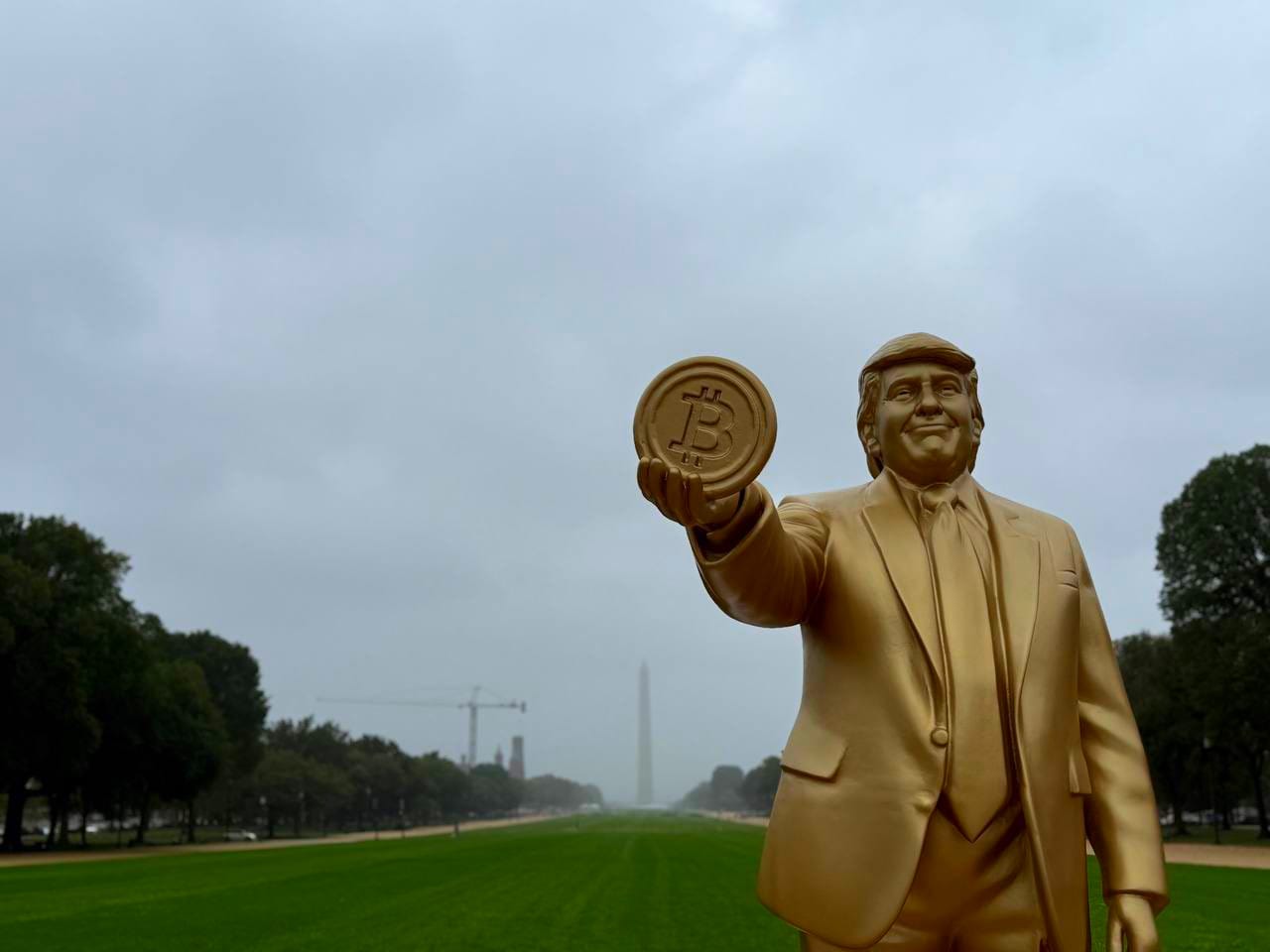Golden Trump Bitcoin Statue Sparks Debate in Washington DC

A striking 12-foot golden statue of President Donald Trump holding a Bitcoin appeared outside the U.S. Capitol on September 17, 2025, captivating onlookers and igniting a firestorm of reactions. The shimmering monument, unveiled just hours before the Federal Reserve announced a 25-basis-point interest rate cut, transformed a routine monetary policy day into a vivid display of political theater and cryptocurrency promotion. Funded by crypto investors tied to a Solana based memecoin called DJTGST, the statue symbolized Trump’s growing alignment with Bitcoin and the broader digital currency movement.
The unveiling drew crowds to the National Mall, where the statue stood opposite Union Square, roughly a mile from the White House. Its creators, associated with the Pump.fun platform, described the installation as a tribute to Trump’s vocal support for cryptocurrency, which has intensified since his return to the presidency in January 2025. The timing, coinciding with the Fed’s rate cut, was strategic, as lower interest rates are often seen as favorable for high-risk assets like Bitcoin. The statue’s golden sheen and larger-than-life design made it an instant social media sensation, with images and videos circulating widely across platforms.
In case you missed it, a 12-foot golden statue of President Donald Trump holding a Bitcoin appeared outside the U.S. Capitol this week! 👇 pic.twitter.com/GNYQNIqc7m
— Bitcoin & Crypto Alerts 🚨 (@bitcoinxalerts) September 20, 2025
Symbolism and Controversy Surrounding the Statue
The statue’s creators framed it as a bold statement on the evolving landscape of finance and politics. Hichem Zaghdoudi, a representative for the project, told ABC News the installation was meant to spark dialogue about government-issued currency and highlight Trump’s role in accelerating Bitcoin’s mainstream adoption. The memecoin DJTGST, launched alongside the stunt, briefly reached a market cap of $2.4 million, underscoring the crypto community’s enthusiasm for the spectacle. Supporters of the statue hailed it as a fitting tribute to Trump’s pro-crypto policies, including his signing of the GENIUS Act, the first federal cryptocurrency law mandating full reserves and audits for stablecoins.
However, the statue also drew sharp criticism. Cultural observers compared its golden grandeur to religious iconography, with some online commentators referencing biblical warnings against idolatry. Critics argued the stunt oversimplified complex financial and political issues, prioritizing flashy visuals over substantive policy discussions. They pointed out that while the statue generated buzz, it risked overshadowing ongoing debates about cryptocurrency regulation and the government’s role in digital finance.
The installation’s brief presence, it was removed shortly after its unveiling, did little to dampen its impact. Social media platforms, particularly X, buzzed with reactions ranging from admiration to mockery, reflecting the polarized views on Trump and cryptocurrency. The statue’s creators leaned into the controversy, teasing future projects with a cryptic message: “Did you enjoy the first event guys? Get ready for the next.” This promise suggests the intersection of politics and crypto spectacle is far from over.
Public fascination with the statue was amplified by Trump’s broader influence in the crypto space. His administration’s push for deregulation and his family’s financial interests in digital currencies have sparked both enthusiasm and concern about conflicts of interest. The statue, for many, embodied this tension, a gaudy symbol of Trump’s outsized role in shaping the narrative around DeFi. Its placement near the Capitol, a hub of legislative power, underscored the growing influence of cryptocurrency in American politics.

